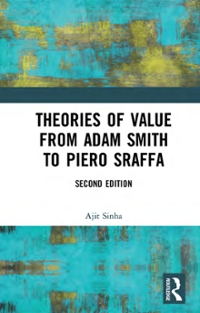Please explain these graphs and the curves, what are these ATC and the SMC, its very confusing, thanks
E/Q SMC240 ATC 240 ATC120 SMC120 SMC200 ATC 200 Q1 Q2 Q 3 Q FIGURE 11.22 Short-Run Cost Curves for Different Amounts of Fixed Capital The SMC and ATC curves when capital is fixed at 120 or 200 or 240 machine-hr/hr. With a larger amount of capital it is relatively cheaper to produce a larger output. The output level where it is optimal to employ 120, 200 or 240 machine-hr/hr is given by 21, 22 and 23. In the long run we know that capital need not be fixed at 120 machine- hr/hr. What if capital is 200 machine-hr/hr? We can derive a new set of short-run cost curves. Figure 11.22 depicts the SMC and ATC curves when capital is fixed at 200 machine-hr/hr. Because of the larger amount of capital it is more expensive to wash a relatively small amount of laundry but cheaper to wash a relatively large amount of laundry. Figure 11.22 also depicts the SMC and ATC curves when capital is fixed at 240 machine-hr/hr. Clearly, there is no reason to consider only 120, 200 or 240 machine- hr/hr. We can derive short-run cost functions for any amount of capital. Suppose, again, that capital is fixed at 120 machine-hr/hr. For most levels of output Kelly would wish he had either more or less than 120 machine-hr/hr. The only reason Kelly does not change capital is because he cannot. There should, however, be some output level where capital of 120 machine-hr/hr is optimal. That is, there must be some output level where Kelly would choose to have 120 machine-hr/hr. Suppose that this is output Q1 in Figure 11.22. To the left of Q1 Kelly has 'too much' capital. To the right of Q1 he has 'too little' capital. But, at 91 it would be optimal to employ exactly 120 machine-hr/hr.FIGURE 11.23 The Family of Cost Curves Associated with a U-Shaped LAC The LAC curve is the 'outer envelope' of the ATC curves. LMC = SMC at the Q value for which the ATC is tangent to the LAC. At the minimum point on the LAC, LMC = SMC = ATC = LAC. This allows us to relate short-run and long-run cost curves. There is just one more thing to mention. If Kelly is employing 120 machine-hr/hr and not producing output Q1 then his costs must be higher than they could be in the long run, because he is employing either too much or too little capital. The ATClzo curve must, therefore, lie above the LAC curve everywhere except at Q]. Similarly the ATCZOO curve must lie above the LAC curve everywhere except at Q2. One way of thinking of the LAC curve is thus as an 'envelope' of all the short-run average total cost curves. Note that at the minimum point on the LAC curve in M (Q = Q2), the long-run and short-run marginal and average costs all take exactly the same value. The Appendix to this chapter considers the relationship between long- run and short-run costs in greater detail. It also develops the calculus approach to cost minimization








